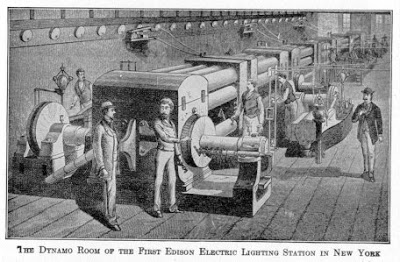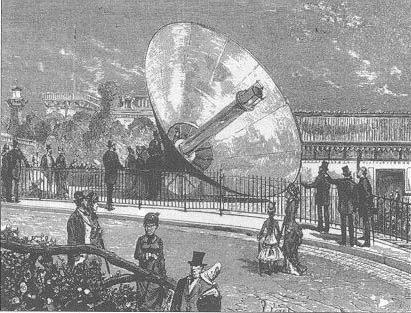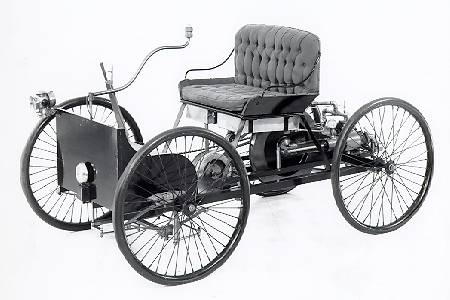Human Achievement Hour: An Enlightened Choice for Saturday Night

It’s a fun time of year . . . at CEI HQ anyway. Once again we prepare to celebrate Human Achievement Hour—the holiday we started as a tongue-and-cheek response to Earth Hour.
On March 19th at 8:30-9:30pm, Earth Hour protestors will turn off their lights to express solidarity with the planet and “do something” about climate change. At the same time, HAH partiers will turn on the lights, drive to a pub, or engage in some other enjoyable activity to cheer the products of human ingenuity that allow us all to live better, longer, healthier lives and to applaud the institutions of liberty on which innovation, prosperity, and human flourishing depend.
If people want to save money by using less electricity and gas, more “power” to them. But the dogma that conservation always pays for itself, hence consumers should be compelled to invest in conservation for their own good, is authoritarian twaddle.
For example, a new Heritage Foundation study finds that federal automobile fuel-economy standards are a “costly mistake.” The abstract:
Corporate Average Fuel Economy (CAFE) standards are adding thousands of dollars to the prices of new cars. When the Obama Administration began implementing Congress’s stricter CAFE standards in 2009, scholars predicted that the standards would cost consumers at least $3,800 per vehicle. Vehicle prices, which had been falling, began rising in 2009 and have not stopped. The average vehicle now costs $6,200 more than if prices had followed their previous trend. Prices will continue to rise, by at least $3,400 per car through 2025, unless this costly policy mistake is undone.
A regulation-induced cost increase of $6,200 per vehicle, rising to $9,600 per vehicle, would price millions of low-income families out of the market for new cars. Well worth the sacrifice, Earth Hour protestors might say, if it helps save the planet.
But, according to the Obama administration’s own estimates, by 2100, new-car fuel economy standards for Model Years 2017-2025 will reduce projected global warming by 0.0076 to 0.0184°C, and sea level by approximately 0.074–0.166 cm, “based on a range of climate sensitivities” (76 FR 75097). The climatic benefits, if any, would be hypothetical and undetectable. An abysmal cost-benefit ratio.
Batman may be a dark crusader, but Earth Hour activists are crusaders for darkness. Aren’t they a tad uncomfortable about being in the same camp with Sauron, the Borg, and the Dark Elves? These guys need a new PR consultant.
Seriously, it is baffling anybody would think collective darkness is the image of a virtuous society. The typical North Korean’s carbon footprint is mighty small. In North Korea, every hour is Earth Hour.

Abundant, affordable, reliable energy is the critical wellspring of human progress, because it literally puts superhuman power at the beck and call of ordinary people. Note the amazing correlation between population, life expectancy, and per capita income—the best overall indicators of human health and welfare—with carbon dioxide emissions, the best proxy for global energy consumption:
One of the blessings of an energy-rich society is that the vast majority do not have to spend all their short time on planet Earth just trying to eke out a living. Large numbers have the leisure and wherewithal to pursue interests apart from work, and markets and technologies continually evolve to facilitate those pursuits.
Consider music instruction. Few working adults have time for regular lessons. Even fewer can afford to travel hundreds or thousands of miles or pay small fortunes to study with the world’s top recording artists. But technologies supported by fossil fuels—instructional CDs and DVDs, downloadable video programs, interactive online teaching, and untold thousands of free YouTube offerings—now present eager learners with an embarrassment of riches.
A company called Homespun Tapes pioneered this market nearly 50 years ago. Their early courses featured instruction books for guitar and other stringed instruments with an accompanying audio tape by top-flight players such as bluegrass virtuoso Tony Rice. They later switched to CDs, then to VHS, then DVDs, and then digital downloads—a smorgasbord of lessons in 20 different instruments, all taught by top players in their respective genres.
A company called True Fire offers DVDs and downloadable programs in nine different guitar genres plus various skill-building courses, all taught by renowned players, as well as online interactive private lessons.
In January, I enrolled in an Artistworks.com course with Bryan Sutton, one of the best bluegrass flatpickers of all time. For less than what it might cost me to take two in-person lessons with Bryan, to say nothing of the expense of flying to Nashville, I have unlimited access to hundreds of online lessons for an entire year, and can download and keep the sheet music for each lesson.
Each student also has the option to post a video of his performance of the lesson assignment, after which Bryan posts a video with suggestions to help the student make additional progress. I have not done this yet but plan to do so when I get into more advanced material. All students have access to the interactive videos, creating a virtual masterclass.
I probably would have signed up anyway but one thing clinched it for me—plummeting gas prices. With gas hovering around $2.00 a gallon, my annual fuel savings are more than twice the cost of a 12-month membership in Bryan’s guitar school.
Back in 2011, President Obama told Americans “we can’t just drill our way out of this [$4.00/gal. gas] problem.” Well, we—or rather North America’s oil and gas producers—did exactly that.
My colleague Daniel Simmons at the American Energy Alliance posts a remarkable chart that explains at a glance why oil prices are so low. It’s not because the Saudis are manipulating the market by opening up the OPEC spigots.

Simmons comments:
The real reason we have low oil prices today is because since 2008, U.S. oil producers—along with some help from Canada—dramatically increased oil production. The U.S. government did nothing to help; in fact, oil production from U.S. federal lands and waters actually decreased since 2010. Private enterprise and free markets, here and in Canada, drove oil production up and oil and gas prices down.
In fact, 97 percent of the total increase in world oil production came from the U.S. and Canada alone.
The crusaders of darkness would have us believe fossil fuels are the past, renewables the future. In fact, all of today’s major energy technologies except nuclear power began in the 19th century. Thomas Edison built the world’s first coal-fired power plant in New York City in 1882. Here is a woodcut of the 27-ton “Jumbo” dynamos at Edison’s Pearl Street Station in lower Manhattan.

Charles F. Brush built the first “automatically operated” wind-powered electric generating turbine, in 1887, in Cleveland, Ohio.

French mathematician Augustin Mouchot built solar concentrators in the 1870s to generate steam, drive engines, and even produce ice. The woodcut below depicts Mouchot’s Solar Generator, unveiled at the Universal Exhibition in Paris, in 1878. “These engines became the predecessors of modern parabolic dish collectors,” writes DOE’s Energy Efficiency and Renewable Energy Lab.

Henry Ford’s first vehicle, the Quadricycle built in 1896, was designed to run on pure ethanol.

Whatever their date of origin, all energy technologies undergo continual modification and innovation. What matters is their value to consumers today and the foreseeable future, not when they first deployed at commercial scale.
As long as people are free to risk their own capital in the pursuit of a “better mouse trap” and consumers rather than market-rigging tax and regulatory schemes pick winners and losers, innovators will continue to push back the darkness of ignorance and misery, and each day will bring new reasons to celebrate human achievement and the institutions that sustain it.